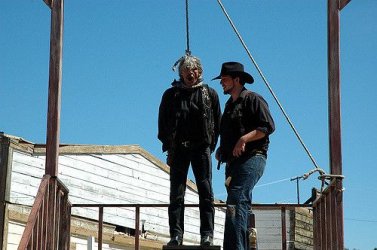Stephanie
Diamond Member
- Jul 11, 2004
- 70,230
- 10,864
- 2,040
lovely. yet some you put your complete trust in these elected idiots...ObamaCare ANYONE?
SNIP:
A flailing strategy for too-big-to-fail.
by
Rodrigo Sermeño
May 7, 2014 - 11:07 pm
WASHINGTON A group of top economists said a law intended to prevent future bailouts for big banks has only institutionalized the practice, while failing to address the problems that led to the financial crisis of 2008.
The 2010 Dodd-Frank legislation mandated hundreds of major regulations to control risky financial activities, with the aim of preventing a repeat of the taxpayer bailouts of too big to fail financial institutions.
Many experts have concluded that Dodd-Frank has worsened the too-big-to-fail problem by expanding capital requirements that contributed to the 2008 financial crisis by allowing banks to use arbitrary measures of risk, leading them to hold capital that did not have the same loss-absorbing capacity as equity. Since the late 1980s, federal regulators have required banks to hold a certain amount of capital (such as equity) based on the amount of money they lend to customers and the securities they hold (the banks assets). These rules are intended to force banks to build a cushion against unexpected losses.
Charles Calomiris, an economics professor at Columbia Universitys Graduate School of Business, said Dodd-Frank has established an explicit process for bailing out a too-big-to-fail institution.
Unfortunately, Title II of Dodd-Frank institutionalized the bailouts of too-big-to-fail banks rather than avoiding them. It did that because it creates a political path of least resistance for politicians to bail out the large banks, Calomiris said at a panel hosted by the Heritage Foundation. In fact, it not only creates the actual process through which that would happen, but even funds it through a special new tax.
Dodd-Franks Title II gives the Treasury Department and the Federal Deposit Insurance Corp. (FDIC) the authority to liquidate financial companies. The financial reform law permits bailouts through the laws resolution authority provision. This bailout would be financed by taxes on surviving banks, and if these funds are insufficient, then by taxpayer money.
ALL of it here
PJ Media » Economist: Dodd-Frank Has Created a ?Path of Least Resistance? for Bank Bailouts
SNIP:
A flailing strategy for too-big-to-fail.
by
Rodrigo Sermeño
May 7, 2014 - 11:07 pm
WASHINGTON A group of top economists said a law intended to prevent future bailouts for big banks has only institutionalized the practice, while failing to address the problems that led to the financial crisis of 2008.
The 2010 Dodd-Frank legislation mandated hundreds of major regulations to control risky financial activities, with the aim of preventing a repeat of the taxpayer bailouts of too big to fail financial institutions.
Many experts have concluded that Dodd-Frank has worsened the too-big-to-fail problem by expanding capital requirements that contributed to the 2008 financial crisis by allowing banks to use arbitrary measures of risk, leading them to hold capital that did not have the same loss-absorbing capacity as equity. Since the late 1980s, federal regulators have required banks to hold a certain amount of capital (such as equity) based on the amount of money they lend to customers and the securities they hold (the banks assets). These rules are intended to force banks to build a cushion against unexpected losses.
Charles Calomiris, an economics professor at Columbia Universitys Graduate School of Business, said Dodd-Frank has established an explicit process for bailing out a too-big-to-fail institution.
Unfortunately, Title II of Dodd-Frank institutionalized the bailouts of too-big-to-fail banks rather than avoiding them. It did that because it creates a political path of least resistance for politicians to bail out the large banks, Calomiris said at a panel hosted by the Heritage Foundation. In fact, it not only creates the actual process through which that would happen, but even funds it through a special new tax.
Dodd-Franks Title II gives the Treasury Department and the Federal Deposit Insurance Corp. (FDIC) the authority to liquidate financial companies. The financial reform law permits bailouts through the laws resolution authority provision. This bailout would be financed by taxes on surviving banks, and if these funds are insufficient, then by taxpayer money.
ALL of it here
PJ Media » Economist: Dodd-Frank Has Created a ?Path of Least Resistance? for Bank Bailouts


